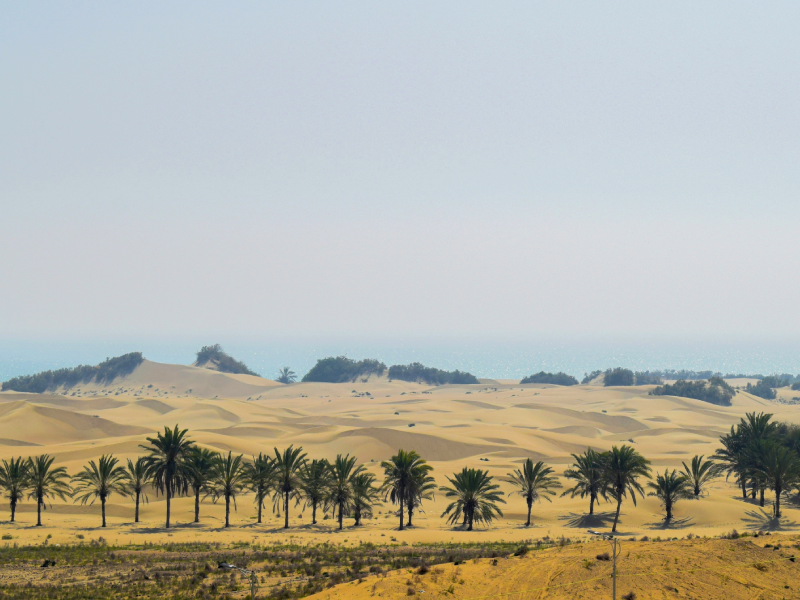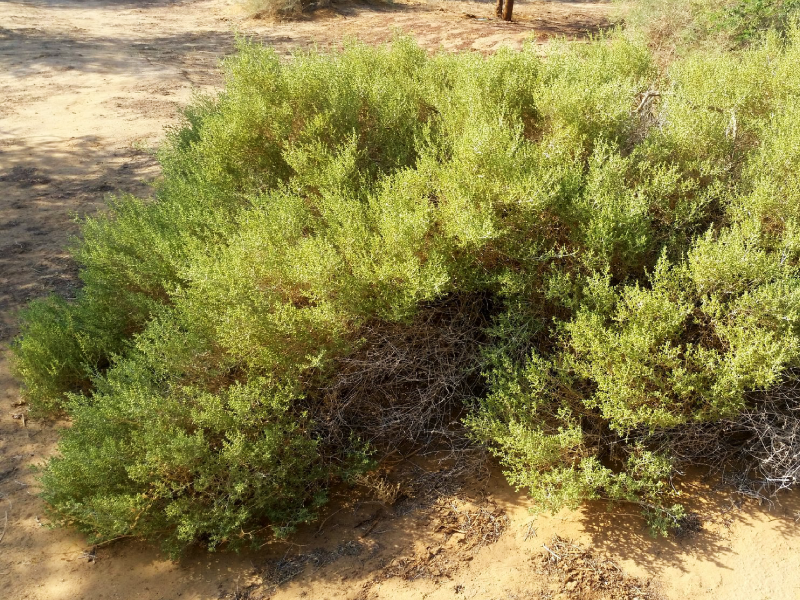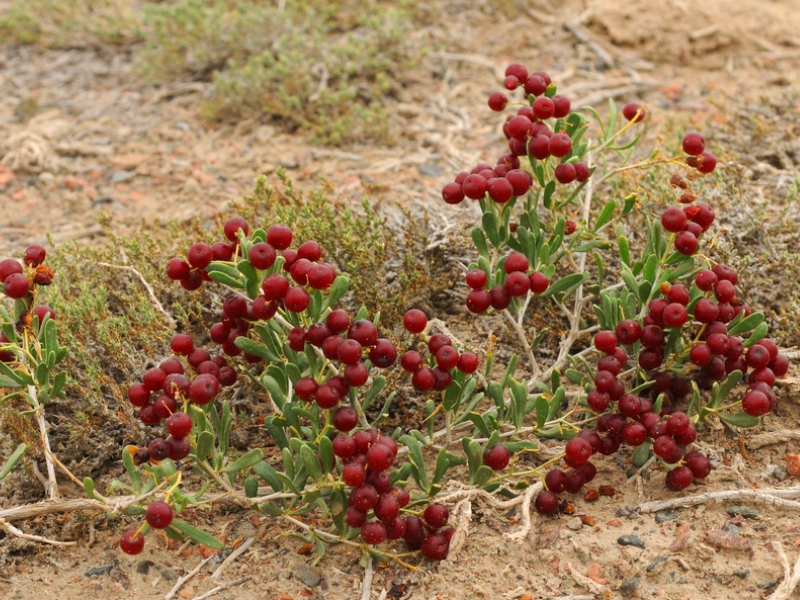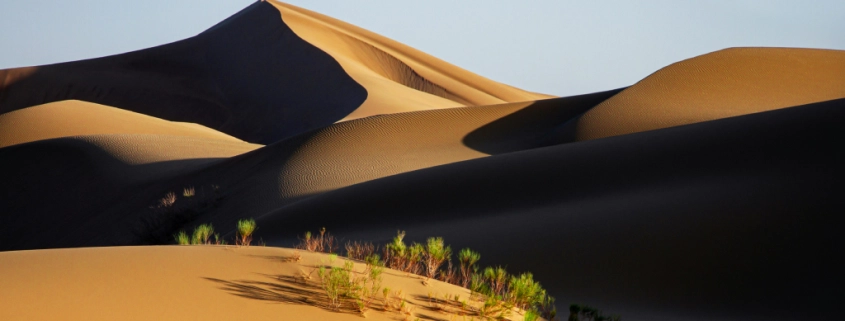Desert Plants of Iran (Names, Photo)
Iran is full of areas with a dry and desert climate. Contrary to what most people think, no plants grow in the desert, but in these areas, we see Iran’s desert vegetation. Many desert plants of Iran not only prevent soil erosion and displacement, but many of them also have medicinal properties.
For every nature tour guide and every adventurer who enters the Iranian wilderness, it is better to take a closer look at his surroundings and make his or her trip more interesting by having this information.
In this article, we will introduce you to the different types of Iran desert plants. Many of these plants are special and unique even in the whole world, some of them are only endemic to the deserts of Iran.
What Kind of Plants Are in the Desert?
Desert ecosystems host a set of plants that are adapted and resistant to survive in harsh and dry conditions. These plants have unique characteristics to conserve water and grow in sandy and dry environments.
Succulents such as cacti are iconic symbols of desert flora with their fleshy, thick stems and spines. These plants store water in their tissues, allowing them to withstand long periods of drought.
Another common desert plant is the creosote bush, known for its gummy leaves and distinctive scent after rain. Desert shrubs such as heather and mesquite are also common, their deep root systems help them access scarce water sources below the surface.
These resilient plants play an important role in desert ecosystems, providing food and shelter for wildlife while contributing to the region’s unique biodiversity.
Desert Plants Names
Desert plants are usually named after their appearance, characteristics, habitat, or the botanists who discovered or studied them. Some desert plants are named for their physical characteristics, such as the barrel cactus, which resembles a barrel, or the Joshua tree, which is named for its unique branch structure that resembles outstretched arms.

Others may be named after their habitat, such as desert sage or desert lavender, indicating their association with arid environments. Additionally, botanists may name plants after themselves or others who have made significant contributions to the study of desert flora, such as the Brittlebush (Encelia farinosa), named after its discoverer, Thomas Nuttall.
Naming desert plants is a combination of observation, scientific study, and historical context that helps classify and understand the diverse plant life found in desert ecosystems.
Desert Plants Adaptation
Desert plants have acquired significant adaptations to survive in their harsh and dry habitats. One of the most notable adaptations is water conservation. Many desert plants, such as cacti and succulents, have evolved to store water in their stems, leaves, or roots, reducing the need for frequent watering.
In addition, these plants often have reduced leaf surfaces or modified leaves such as spines or waxy coverings to minimize water loss through transpiration. Their ability to photosynthesize using specialized mechanisms, such as CAM (Crassulacean Acid Metabolism) or C4 pathways, enables them to grow despite limited water availability.
Also, desert plants have developed strategies to cope with extreme temperatures. Some have deep root systems to access groundwater, and others have shallow roots to quickly absorb rainwater. Many desert plants also have mechanisms to regulate their internal temperature, such as small, brightly colored leaves that reflect sunlight or the ability to shed leaves during periods of drought to reduce water loss.
It is better to take a look at the desert plants photos to better understand the distinctive features of these plants. Together, these adaptations enable desert plants to flourish in environments where water and temperature fluctuations pose significant challenges and contribute to the unique biodiversity of desert ecosystems.
Iran Desert Plants
The vegetation cover of the desert areas of Iran is proportional to factors such as rainfall distribution, temperature changes, humidity, surface and underground water sources, topographic and physiographic conditions, geological formations, soil texture and structure, etc.

Livestock fodder and other exploitations of pastures, providing wood and other forest products, stabilization of quicksand, prevention of water and soil wastage, habitat for wildlife, etc., all indicate the importance and place of vegetation in the natural and environmental resources of the desert areas of Iran.
Most of the natural plants in the desert regions of Iran are terrestrial, saline, sandy, chalky, limestone, etc., and in other words, the type of vegetation depends to a great extent on the type of substrate and especially the specific characteristics of the soils of such areas. In the following, we introduce some common plants in the deserts of Iran.
Cyperus Conglomerates
Cyperus conglomerates, known locally as “Kalbit,” is a perennial plant species found throughout the sandy areas of the long Aran and Bidgol sand dunes (sand hills, sand alley beds, sand dune hollows, and even on the surfaces of sand dunes). Kalbit is one of the sand-friendly plants highly adaptable to sandy and nutrient-poor soils. This plant as a dominant cover, creates a uniform and homogeneous plant type in sand dunes.
Due to its wide, ecological flexibility, the geographical distribution of this plant in Iran is very extensive, ranging from the southern, and central to northern regions of the country. It has narrow, elongated leaves, and usually, a flowering stem emerges from among the leaves, reaching 30 to 60 centimeters in length. The seeds of the plant easily separate from the ornamental flower cover and are scattered by the wind after ripening.
Seidlitzia Rosmarinus
Seidlitzia rosmarinus is a salt-loving and drought-resistant shrub often found in saline and alkaline regions of deserts. It thrives in desert plains, salt marshes, and the deserts of Damghan, Sabzevar, Khorasan, Kerman, Yazd, and many other saline areas of Iran as a native and adaptable species.

Belonging to the family Chenopodiaceae, it has succulent, fleshy, cylindrical-shaped leaves rich in salts. The average height of the plant reaches up to two meters, with a crown diameter of up to one and a half meters. Its flowering period starts in early September, and its seeds fully ripen by the month of Aban.
Seidlitzia rosmarinus has an exceptional ability to absorb alkaline salts such as sodium carbonate and potassium compounds, resulting in the production of “kaliab,” an alkaline substance obtained from burning the plant’s branches and leaves. This substance finds use in both industrial and traditional sectors, such as soap-making, pottery, washing silk threads, and glassblowing.
Stipagrostis Plumosa
Stipagrostis plumosa is a shrubby plant mostly found in deserts and sandy areas of southern Iran to the Karakum Desert. Its geographical distribution extends from southern Iran to the Karakum Desert.
This plant commonly thrives in all types of soil, including sandy, loamy, gypsum-rich, and even highly permeable limestone soils. Its resistance to dry climate conditions is because of the presence of a sand sheath surrounding the plant’s roots, protecting the shrub from high temperatures, especially during summer, and low water availability.
Nitraria Schoberi
Nitraria schoberi (Qare Dagh) is a drought-resistant shrub and has many branches from the stem. The stems are often in the form of lying and bent stems, which gives the plant a relatively bulky mound shape. The leaves are fleshy and juicy, the stems become sharp and woody at the end.

The flowers of Nitraria schoberi are white and usually appear at the end of April. Its fruits are brown to black, containing one seed, and can be seen at the end of June. These shrubs are often found in Iran, Afghanistan, and Syria.
Ephedra Strobilacea
Perhaps you can recognize this flowering plant among the desert plants of Iran from its height of one and a half meters. This stem plant has very small and scaly leaves. Its flowers, which grow in May, are yellow and fragrant, and you will see it near a plant like the Nitraria schoberi.
This plant grows very well in chalky soils and has a very active root system. This plant grows in the provinces of Khorasan, Semnan, Qom, Alborz, Dasht Kavir, the desert basin of Iran and Sistan and Baluchestan.
Amygdalus Scoparia
A beautiful shrub whose stems are upright and erect and green in color. Its leaves are narrow and small, and in the spring season, with large white flowers in the semi-arid climate of the country, it creates beautiful scenery. This shrub is resistant to adverse environmental conditions (dehydration and extreme temperature fluctuations).
Amygdalus scoparia belongs to the Rosaceae family, the average height of the plant is between 2.5 to 3 meters, and the diameter of its crown reaches 2 to 2.5 meters. Its fruits are also ripe in June and can be collected.
Final Word
Desert plants, from desert cacti to resilient shrubs such as creosote bushes and sagebrush, show great adaptations for growing in harsh, arid environments. Their ability to conserve water, resist extreme temperatures, and colonize soil poor in nutrients shows the power and wonder of nature. Beyond their survival strategies, desert plants have a unique beauty, often characterized by striking shapes, attractive blooms, and textured foliage.
We recommend taking a look at the desert plants images to better understand the beauty of these unique botanical wonders. Their existence is not only critical to maintaining ecosystem balance but also to supporting diverse forms of wildlife in desert habitats.
The study of desert plants provides valuable insights into ecological resilience and adaptation. Desert plants, with their attractive adaptations and special beauty, are undoubtedly worth seeing and studying.
Are you planning to travel to Iran and looking for an Iran resort? Consider Matinabad Eco-resort.





Leave a Reply
Want to join the discussion?Feel free to contribute!